When a bill comes to Parliament there’s a process MPs follow to make decisions about the bill’s merit, it’s components, and whether or not it will do what it’s meant to.
Among the list of bills MPs are working on is abortion law reform and their decisions will be shaped in part by those who turn up to talk to them at select committee.
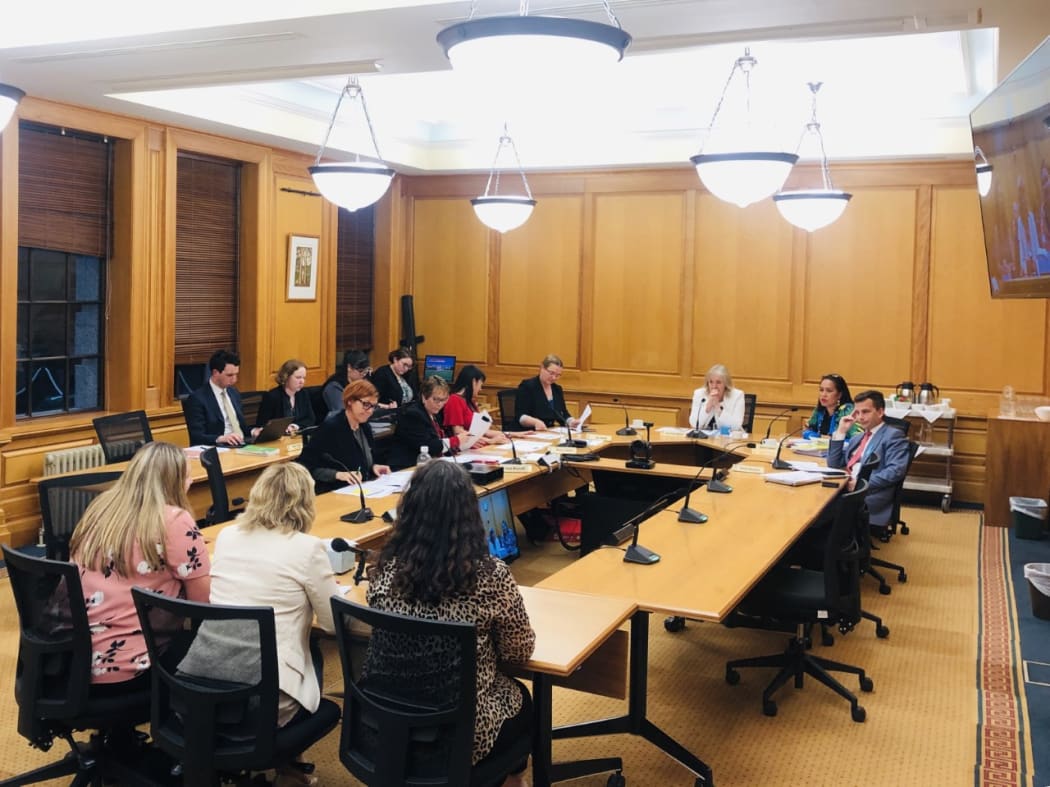
The Abortion Legislation Committee hears from submitters on abortion law reform Photo: VNP / Daniela Maoate-Cox
At present, it is an offence in the Crimes Act to peform an abortion for the first 20 weeks of pregnancy unless one of four statutory grounds is satisfied.
The Abortion Legislation Bill will make abortion a health issue and proposes a number of changes but one that's been a popular topic for discussion is when a woman should be able to have an abortion.
The bill proposes to:
- remove any statutory test on the health practitioner for a woman who is not more than 20 weeks pregnant.
and ensure:
-
A woman who is more than 20 weeks pregnant will require the health practitioner to reasonably believe the abortion is appropriate with regard to the pregnant woman's physical and mental health, and well-being
If a bill passes its first reading debate, as this one did, it’s referred to a select committee. For this bill, a special committee was created, called the Abortion Legislation Committee.
It has two members each from Labour and National, and one from New Zealand First, The Green Party, and the ACT Party.
Select committees get about six months to consider a bill which includes hearing submissions from officials, members of the public, lobbyists, and experts.
They can also ask for someone to brief them on an issue and this committee invited the Law Commission to do that.
The Law Commission is an independent Crown Entity established by Parliament under the Law Commission Act 1985 to reform New Zealand’s law.
Last year the Minister of Justice Andrew Little wrote to it, asking for advice on how to treat abortion as a health issue.

Minister of Justice Andrew Little speaks to media before heading into the debating chamber. Photo: VNP / Daniela Maoate-Cox
After consultation with the public and health officials, the Law Commission came back with three models.
Model A = no statutory requirement and no specific legislation, it would be a matter between a pregnant person and the medical practitioner.
"That model was the one that medical experts told us was the most akin to how other health issues are treated in our legal system," Law commissioner Belinda Clark told the Abortion Legislation Committee.
Model B = the most restrictive. It would include a statutory test being applied before an abortion could be performed, meaning the health practitioner would have to reasonably believe the abortion was appropriate in the circumstances.
Model C = a compromise of the two other options, with the inclusion of a gestational limit of 22 weeks. After 22 weeks there would need to be a statutory test with a health practitioner deciding whether the abortion would be appropriate given the circumstances of the woman's physical health and wellbeing.
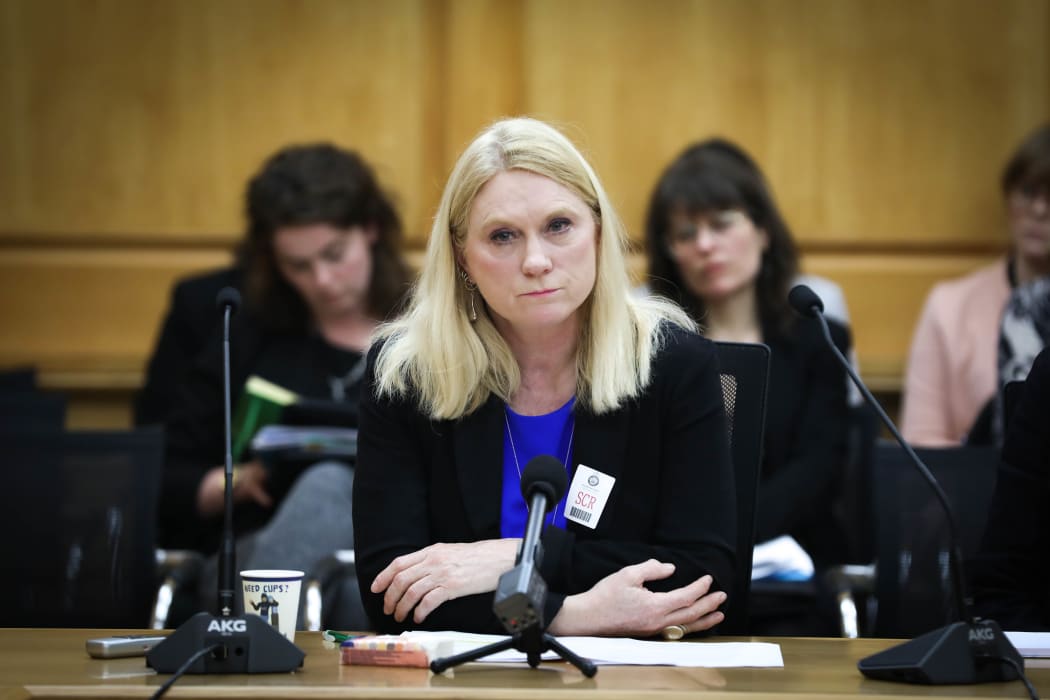
Law Commissioner Belinda Clark speaks to the Abortion Legislation Committee at Parliament Photo: VNP / Phil Smith
The last model was the closest to the current bill said Clark.
"We suggested in our report 22 weeks and I'm aware that's been modified in the bill and the situtaion up until that time would be the same as in Model A, in other words it would just be a matter for the woman and her health practitioner."
The briefing helps prepare MPs for the hearings from submitters that are coming up. It's an opportunity for them to ask the experts anything they're not sure about.
"At the moment it's 20 (weeks) you recommended 22, the bill's gone back to 20, I'm just interested to explore with you why you settled on that, the factors either way that took you to that position?" asked National MP Amy Adams.
"To align the treatment of abortion most closely with the health system you'd probably go with option A," answered Clark.
"We sought medical advice on when a foetus would be viable outside the womb at a certain number of weeks. The medical evidence seems to be gathering around a consensus of 22 weeks which is why we put 22 weeks in the report but some specialists were at pains to point out it's a grey area."
"Surely that would be minimum viability?" asked Adams.
"Well yes, Queensland's adopted 22 and they say that's before the threshold of viability so that's where they've come down so in a sense that was out best attempt to reflect the medical consensus at the moment."
Submitters
The usual process for a bill becoming law is for Parliament to ask the public to submit its view.
Submissions are written and given to the committees before invited speakers turn up in person so the MPs have an idea of what they’ll talk about.
MPs also have to think critically about the information they’re receiving like how much weight should the view of an individual with strong religious beliefs be given against the opinion of a medical organisation.
As a Parliamentarian they’ll be searching for information to make the best legislation possible, as a politician, they might keep an ear out for submissions that support their own arguments.
The window for submissions has closed for this bill but the Abortion Legislation Committee has started its public hearings with some submitters which are live-streamed on its Facebook Page.
ALRANZ - abortion law reform association of NZ
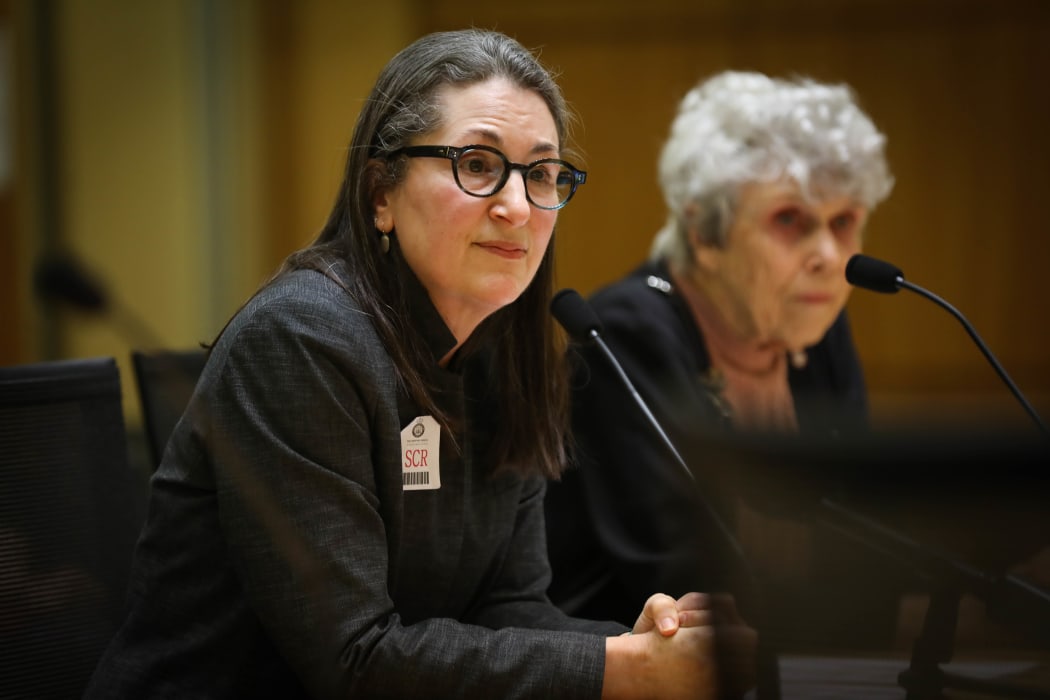
National President of ALRANZ Terry Bellamak Photo: VNP / Daniela Maoate-Cox
Formed in the 1970s, ALRANZ is in favour of abortion law reform and has a list of beliefs and objectives including the belief that all persons have the right to bodily autonomy and moral agency and wanting New Zealand to model its abortion laws on those of Canada.
National MP Agnes Loheni said ALRANZ’s submission calls for removing the statutory test after 20 weeks and asked if that means abortion for any reason up to full term.
ALRANZ President Terry Bellamak said she rejects the use of "full term".
"I reject that framing because abortions at later gestations, say after 20 weeks, in the first place they represent less than 100 abortions that occur in New Zealand," said ALRANZ President Terry Bellamak.
"Those that do occur are for medical reasons, either fatal foetal abnormality or a problem that presents a risk to the life or health of the mother."
Family First
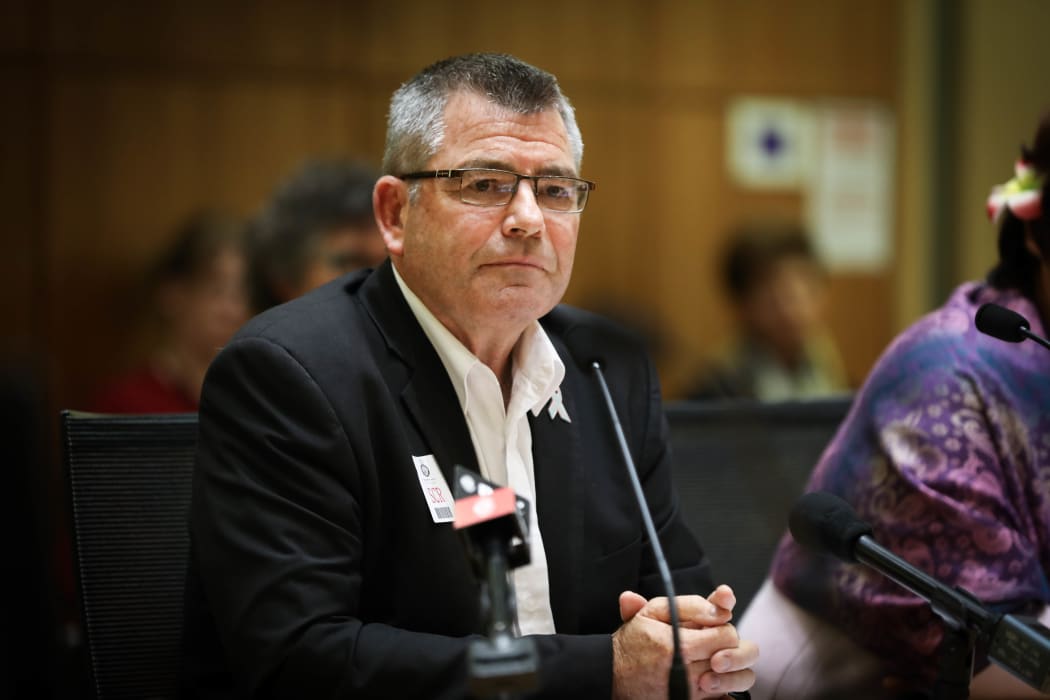
Family First National Director Bob McCoskrie speaks to the Abortion Legislation Committee Photo: VNP / Daniela Maoate-Cox
Family First has about 3700 financial members and says it promotes family values including protecting marriage in law as between one man and one woman, and automatic parental notification of teenage pregnancy or abortion.
ACT Party leader David Seymour said the submission wasn't clear about what Family First wants and he asked its Director Bob McCoskrie to clarify.
"You say 'one of our key points is a law that limits the timeframe for having an abortion', well this bill liberalises it," said McCoskrie.
"So that is a key component, we would like to see it further restricted. We believe the surveys show that people want it restricted. When people realise that its up to 20 weeks they actually don't agree with that."
"So when you say you want a limit on the time frame what you really meant is you want a shorter limit than what it is now? How short should it be?...are you at ten weeks?" asked Seymour.
"We would support a heartbeat type concept," answered McCoskrie. "Once the heartbeat is detected, I mean if you were to collapse right now the first thing we'd check for is a heartbeat."
Voice for Life
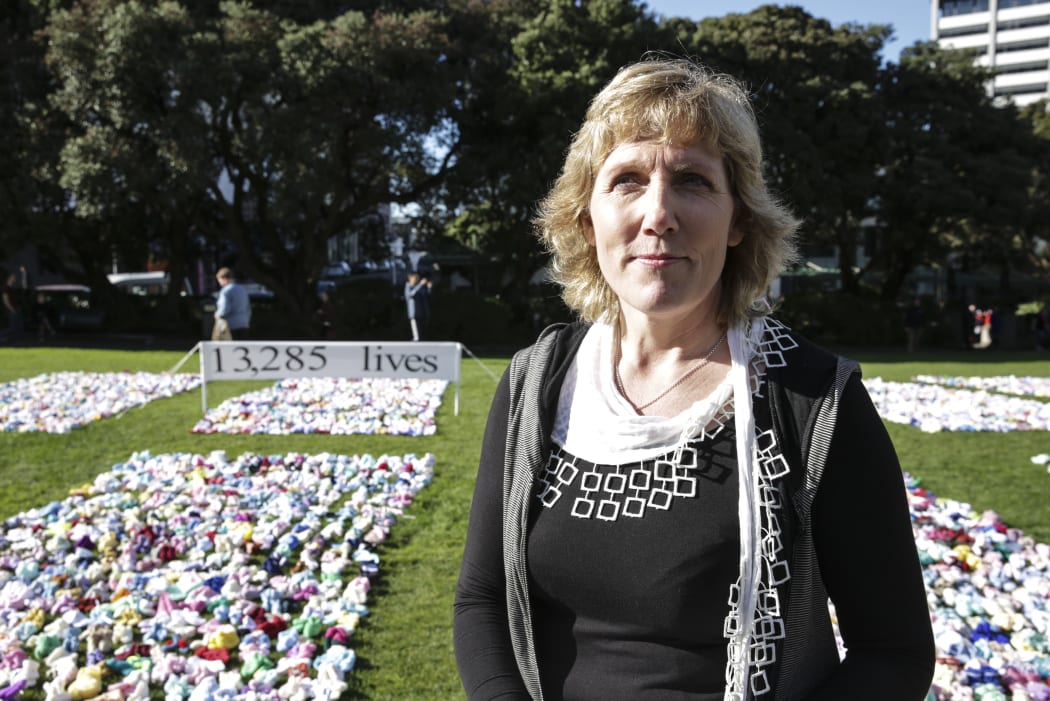
Voice for Life national president Jacqui DeRuiter. Photo: RNZ / Richard Tindiller
Voice for Life has been around for about 40 years and says it is a charitable organisation that speaks out on bioethics, particularly abortion.
It says that human life begins at conception and the Government has not shown evidence the public wants abortion law reform.
Green MP Jan Logie asked what Voice For Life's view is on women who are coerced into carryout out a pregnancy.
Its president Jacqui de Ruiter said it doesn't condone it.
"But we would strongly strongly expect that every women would be given true, informed information i.e. the development of where their foetus, embryo is," she said.
"Any pregnancy can be confirmed, the stage of development by an ultrasound like a beating heart 22 days after conception, just the facts, no emotion."
"It's not a tooth being pulled it's a beating heart that's there and abortion stops a beating heart.
"So a woman that would realise that, fine. It's her choice to make but she must be presented with the truth of what it is."
New Zealand Medical Association

Chief Executive Office of the New Zealand Medical Association Lesley Clarke Photo: VNP / Daniela Maoate-Cox
The New Zealand Medical Association (NZMA) was formed over a century ago and has more than 5,000 members.
It supports treating abortion as a health issue and is generally comfortable with the proposed changes for an abortion up to 20 weeks but it is concerned the test for abortion post 20 weeks is too weak.
Under current law, two certifying consultants (doctors) agree that continuing the pregnancy would result in serious danger to a woman’s mental or physical health in order for an abortion to take place.
"We're tasked with drafting the law and I'm asking you is if you're given any thought to how what you're proposing can be crafted as a framework," said National MP Amy Adams.
She said the NZMA had used the phrase 'on-demand late term abortion' but the bill counters that by requiring a health practitioner to be involved after 20 weeks and it's their job to make sure it isn't on demand at all.
"The question we have to ask ourselves is, is it appropriate to trust the medical professional to gauge that on a case by case basis or are you looking for more legislative black and white lines and where would you put them?" said Adams.
"Our members have not given us any explicit guidelines, they've raised it as an issue," answered NZMA Chief Executive Office Lesley Clarke.
"I guess one way to look at it is the current provisions around the two certifying consultants [and] whether, for the post 20 weeks, that would help to reassure that those considerations are being taken in to account. "
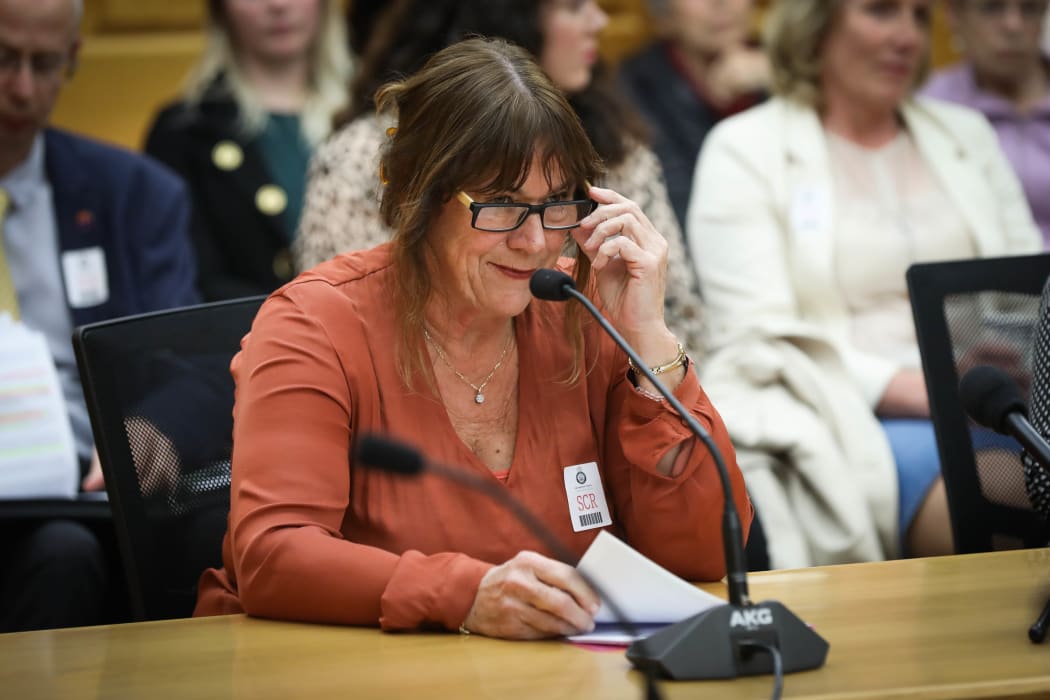
NZMA Chairperson Kate Baddock Photo: VNP / Daniela Maoate-Cox
NZMA Chairperson Kate Baddock agreed members had raised it as a concern.
"I think that we would positively consider a statutory test, such as at the moment the two certifying consultants, being used after 20 weeks," she said.
"But exactly how far after 20 weeks you might want to enforce the statutory two-practitioner-test versus perhaps a single-practitioner is open to this continuing obligation."
What next?
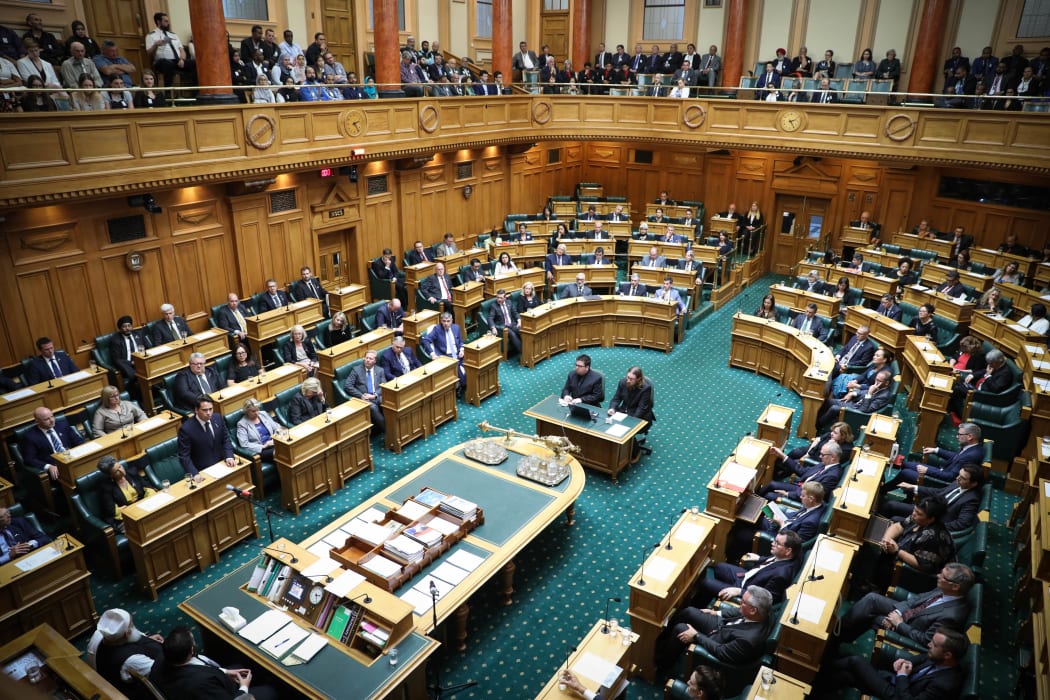
National Party Leader Simon Bridges speaks in the debating chamber. Photo: VNP / Daniela Maoate-Cox
The Abortion Legislation Committee will continue to hear from submitters in person. All written submissions are published online as is the schedule of meetings.
Once the Committee has considered all the submissions it will write a report, potentially with some recommendations, which will be sent to the rest of the MPs in the House and become the topic of debate for the Bill’s second reading later this year.
Follow the bill's progress through the House here.


